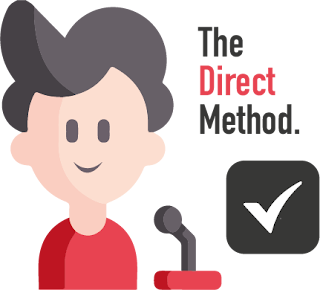Glad to see you again! This time we are going to talk about The Direct Method.
This teaching method was born around the year 1,900 and it is completely the opposite to the G.T.M. The D.M is filled with lots of oral practice of the target language, and also, in this method we find grammar and pronunciation development and correction, as this is also taken into account for evaluating the students.
This method is vital if we want to create fluent speakers of the target language; with the help of The D.M the students are able to improve their speaking and listening skills of the target language, and also, they are able to communicate an learn every day vocabulary and sentences.
Now it’s time to explain to you some of the strengths, weakness, opportunities and threats of this method.
One of the main strengths of The D.M is that students are able to learn the target language as if they are learning their native language; the student listen to conversations and they get vocabulary, just as we learn our native language. One weakness is that students who do not like to speak, basically shy students, they might feel uncomfortable in the classes and they might not learn as well as the rest of the students who are not that afraid of speaking in public. One opportunity is the inductive teaching of grammar because the students face the different grammar structures in the class with the help of all the exercises and examples provided by the teacher, they learn all of this inductively. One thereat about this method is that students only develop their listening and speaking skills but they do not develop their writing and reading skills.
This was my short summary of what I consider the most important parts of The Direct Method and if I am missing something, please let me know, I’ll be waiting for your feedback.
See you in my next entry!






0 Comentarios